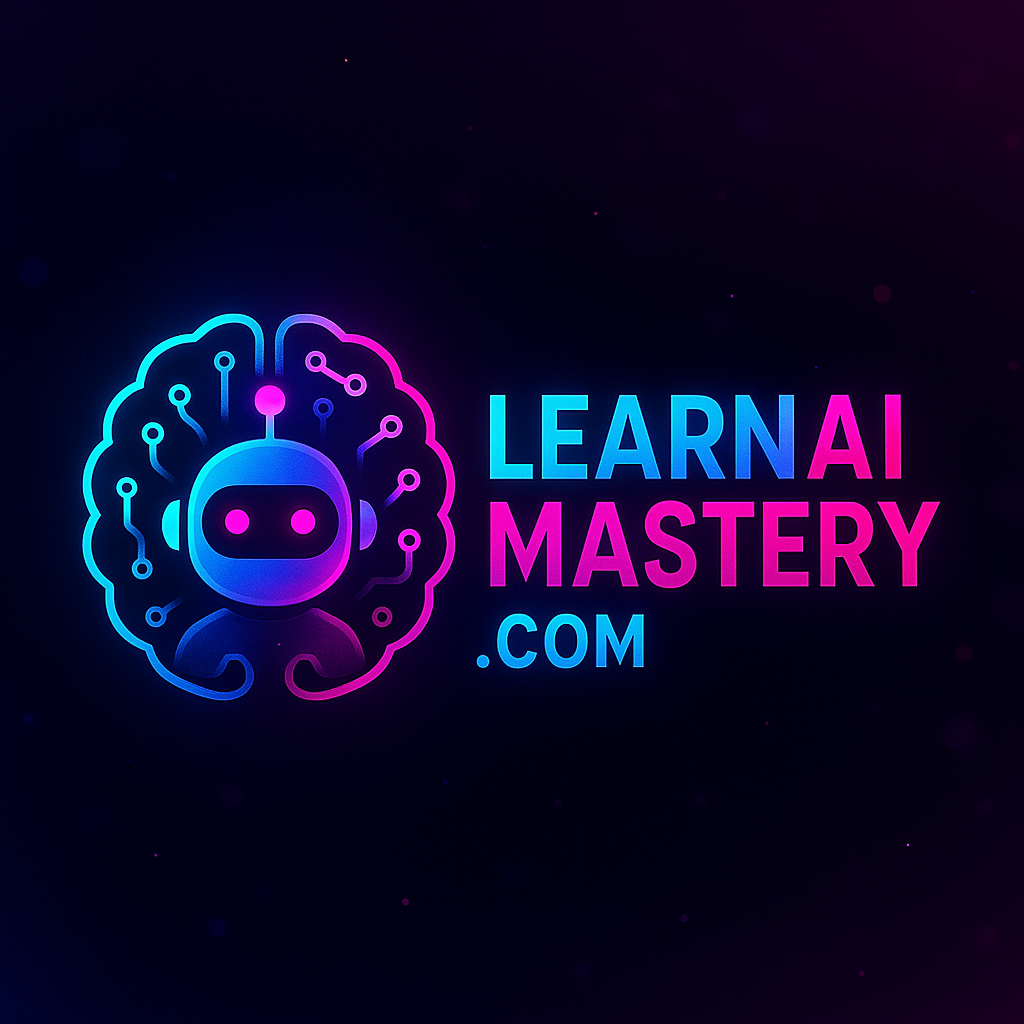Reinforcement learning (RL) has fundamentally transformed the landscape of artificial intelligence and intelligent agents, particularly in the realm of game-playing. Before the advent of RL, game-playing AI relied heavily on handcrafted rules and heuristics, which inherently limited their ability to adapt and learn complex, nuanced strategies. RL, however, introduced a revolutionary paradigm shift. It enabled AI agents to learn optimal strategies through a process of trial and error, interacting dynamically with an environment and receiving valuable feedback in the form of rewards or penalties based on their actions.
One of the most celebrated and pivotal examples of RL’s success is AlphaGo, developed by DeepMind. AlphaGo famously defeated world champion Lee Sedol in Go, a game with a search space astronomically larger than chess, previously considered an insurmountable challenge for AI [Source: DeepMind Blog – AlphaGo: Mastering the ancient game of Go]. This monumental victory not only showcased RL’s unparalleled power to master incredibly complex games but also demonstrated its capacity to discover novel and unexpected strategies that even seasoned human experts found surprising [Source: DeepMind – Mastering the game of Go with deep neural networks and tree search].
Furthermore, RL’s profound impact extends well beyond the intricacies of Go. Early successes were prominently observed in Atari games, where RL agents learned to play various titles at a superhuman level, frequently surpassing human expert scores [Source: Human-level control through deep reinforcement learning]. This remarkable achievement underscored the versatility and generalizability of RL algorithms, laying robust groundwork for advancements in numerous other domains. The consistent success of RL in game-playing AI highlights its immense potential to tackle increasingly complex challenges across a wide array of fields, from sophisticated robotics to life-saving healthcare applications. For a deeper dive into the foundational principles of RL, explore our detailed article on Understanding Reinforcement Learning from Human Feedback.
The Core Mechanics: How Reinforcement Learning Works
Reinforcement learning (RL) stands as a powerful technique specifically designed for training intelligent agents to make optimal decisions within complex and dynamic environments. At its very core, RL involves a continuous interaction loop where an agent engages with an environment, executes actions, and subsequently receives either rewards or penalties based on the outcomes of its performance [Source: Learn AI Mastery – Understanding Reinforcement Learning from Human Feedback]. The overarching objective for the agent is to meticulously learn a “policy” – essentially, a strategic set of rules for selecting actions – that systematically maximizes its cumulative reward over an extended period.
The agent’s learning process is inherently iterative and highly adaptive. It commences by actively exploring the environment, experimenting with diverse actions, and diligently observing their immediate and delayed consequences. Based on these accumulated experiences, the agent continually refines and updates its policy, striving to progressively enhance its future performance. This systematic, trial-and-error approach is not merely incidental but is absolutely central to RL’s remarkable effectiveness and its ability to converge on optimal strategies [Source: GeeksforGeeks – Introduction to Reinforcement Learning].
Three fundamental components distinctly define any RL system:
1. **The Agent:** This is the intelligent entity responsible for both learning and decision-making. It diligently observes the environment’s current state, strategically selects appropriate actions, and then receives the corresponding reward signals. The internal workings of the agent can vary significantly, involving sophisticated algorithms such as Q-learning for simpler scenarios or intricate deep Q-networks (DQNs) for more complex problems, adapting to the demands of the specific challenge.
2. **The Environment:** This constitutes the dynamic world within which the agent operates. It can manifest in diverse forms, ranging from a straightforward grid world simulation to a highly complex virtual environment or even a tangible, real-world robotic system. The environment reacts directly to the agent’s actions by transitioning into a new state and concurrently providing a critical reward signal.
3. **The Reward Signal:** This serves as the indispensable feedback mechanism that precisely guides the agent’s learning trajectory. Rewards are numerical values that quantifiably indicate the desirability or undesirability of the agent’s actions. Positive rewards naturally encourage the behavior that led to them, while negative rewards (penalties) actively discourage undesirable actions. The careful design and calibration of this reward signal are paramount; a poorly conceived reward function can inadvertently lead to unexpected, suboptimal, or even undesirable behaviors [Source: OpenAI Spinning Up – An Introduction to Reinforcement Learning].
Through this continuous, intricate interaction and invaluable feedback loop, the agent progressively learns to effectively map observed states to optimal actions, ultimately achieving its goal of maximizing its long-term cumulative reward. This profound process underpins many of the most successful and impactful applications of RL, spanning from advanced game playing to sophisticated robotics and efficient resource management.
Beyond the Game Board: Real-World Applications of RL
Reinforcement learning (RL), while famously demonstrated and popularized through game-playing AI like AlphaGo [Source: DeepMind – Mastering the game of Go with deep neural networks and tree search], has demonstrably extended its reach far beyond the digital realm. Its inherent capability to learn through persistent trial and error, coupled with its mechanism of receiving rewarding feedback for desirable actions, makes it uniquely well-suited for tackling a myriad of complex challenges found in the real world.
In the rapidly advancing field of robotics, RL algorithms are the driving force behind robots learning intricate tasks such as precise manipulation and autonomous navigation [Source: Nature – Deep reinforcement learning for robot manipulation with asynchronous off-policy updates]. These robots exhibit a remarkable ability to adapt to unpredictable and dynamic environments. This level of adaptability is absolutely crucial in modern manufacturing, where robots trained using RL can proficiently handle variability in tasks and objects, leading to greater efficiency and flexibility on the production line.
Healthcare is another critical domain that is witnessing the profound and transformative power of RL. RL algorithms are being actively utilized to optimize highly personalized treatment plans for various complex conditions [Source: NCBI – Reinforcement learning in healthcare: a review], thereby pushing the boundaries of personalized medicine and significantly improving patient outcomes. Furthermore, RL is playing a pivotal role in developing more efficient and accelerated drug discovery processes [Source: Nature – Discovery of a new class of broad-spectrum antibiotics using deep learning], which has the potential to dramatically speed up research and ultimately save countless lives.
The financial sector is also enthusiastically embracing RL’s immense potential. From sophisticated algorithmic trading strategies [Source: Investopedia – Algorithmic Trading] to advanced risk management systems, RL algorithms are proving invaluable in navigating the inherent complexities and volatility of financial markets. Their unparalleled capacity to learn from historical data and adapt swiftly to ever-changing market conditions makes them exceptionally powerful tools for both accurate prediction and agile decision-making. To learn more about other cutting-edge AI techniques and their real-world impact, we encourage you to explore our insightful articles on Federated Learning: Solution to Privacy Paradox in AI and the exciting, transparent field of Explainable AI: Unveiling the Black Box.
Challenges and Triumphs: Implementing RL in the Real World
Deploying Reinforcement Learning (RL) algorithms effectively in real-world scenarios presents a distinct set of unique and formidable challenges. One particularly significant hurdle is the pervasive issue of data scarcity. RL algorithms typically demand colossal datasets for effective and robust training, which can often be incredibly difficult, time-consuming, and expensive to acquire in many practical applications. Strategies like generating synthetic data can certainly help alleviate this burden [Source: Learn AI Mastery – The Imperative for Synthetic Data], but ensuring that this synthetic data accurately and comprehensively reflects the nuances of the real-world environment is absolutely crucial for model generalization. Another substantial obstacle lies in the sheer computational cost associated with training complex RL models, especially when dealing with high-dimensional state and action spaces that characterize many real-world problems. This often necessitates the deployment of powerful hardware infrastructure and the application of highly sophisticated optimization techniques [Source: Learn AI Mastery – Addressing Computational Challenges in AI]. Effectively addressing these profound computational challenges is undeniably vital for the wider and more mainstream adoption of RL across diverse industries.
Ethical considerations also play an increasingly significant and intricate role in RL deployment. RL agents, particularly during their initial deployment phases, can sometimes exhibit unexpected or undesirable behaviors, potentially leading to unforeseen and negative consequences. Ensuring the inherent safety, reliability, and fairness of RL systems demands meticulous design, rigorous testing, and continuous monitoring. Furthermore, the presence of inherent bias within training data can lead directly to biased or discriminatory outcomes, thereby underscoring the critical importance of utilizing representative, diverse, and unbiased datasets from the outset. Explainable AI (XAI) techniques are rapidly becoming indispensable in addressing these pressing concerns, as they allow for greater transparency and a deeper understanding of the complex decision-making processes underpinning RL agents [Source: Learn AI Mastery – Explainable AI: Unveiling the Black Box]. Moreover, the inherent potential for RL agents to be exploited or misused raises profound ethical questions that demand careful, proactive consideration and robust safeguards. Despite these considerable challenges, the resounding successes of RL in groundbreaking areas like superhuman game playing and adaptable robotics unequivocally demonstrate its immense and transformative potential. Ongoing dedicated research and development efforts are intensely focused on mitigating these identified challenges, thereby systematically paving the way for the broader and more impactful adoption of RL across an even wider array of fields.
Intelligent Agents: The Evolving Landscape of Reinforcement Learning
Reinforcement learning (RL) stands poised on the brink of significant and accelerating advancements, promising to further reshape the landscape of artificial intelligence. One key area of intense focus and development is the creation of even more efficient and robust algorithms capable of adeptly handling increasingly complex environments and navigating high-dimensional state spaces. Ongoing research into advanced methodologies such as actor-critic methods [Source: Actor-Critic Algorithms] and proximal policy optimization (PPO) [Source: Proximal Policy Optimization Algorithms] continues to yield substantial improvements in terms of sample efficiency and algorithmic stability, making RL more practical for real-world applications. Furthermore, the strategic integration of RL with other complementary machine learning paradigms, such as the emerging field of neuro-symbolic AI [Source: Learn AI Mastery – The Dawn of Neuro-Symbolic AI], holds immense promise. This fusion is expected to lead to the creation of powerful hybrid systems that synergistically combine the strengths of both approaches, enabling RL agents to reason more effectively and learn with greater nuance in complex, uncertain environments.
The applications of RL are experiencing a rapid and expansive proliferation across numerous sectors. In the dynamic field of robotics, RL is being actively leveraged to develop more adaptable and truly intelligent robots. These advanced machines will be capable of autonomously performing highly complex tasks even in unstructured and unpredictable environments. Recent breakthroughs vividly illustrate RL agents mastering sophisticated manipulation tasks with unprecedented dexterity [Source: Nature – Multi-task reinforcement learning for soft robotic grasping and manipulation]. Within healthcare, RL algorithms are being meticulously applied to optimize personalized treatment plans and consistently improve patient outcomes, representing a significant stride towards precision medicine [Source: PubMed – Reinforcement learning-based optimization of treatment strategies in critical care: A review]. Early applications in this crucial field have already shown remarkable promise and potential. The potential societal impact of these advancements is truly immense, offering the exciting prospect of fundamentally improving efficiency, enhancing decision-making capabilities, and fostering innovation across a vast spectrum of industries and societal functions.
However, despite these exciting prospects, significant challenges remain and continue to be a focal point for ongoing research. Ensuring the safety, reliability, and robustness of RL agents is paramount, especially when considering their deployment in high-stakes, mission-critical applications where failure is not an option. Consequently, sophisticated techniques for systematically verifying and validating the behavior and performance of RL agents are actively being developed and refined to effectively mitigate potential risks [Source: Safe Reinforcement Learning through Shielding]. Addressing the complex ethical considerations inherently associated with the widespread use of RL, such as issues pertaining to bias, fairness, and accountability, constitutes another critically important and ongoing area of research. The continuous and diligent development, refinement, and responsible application of RL will undoubtedly continue to profoundly shape the future of artificial intelligence, culminating in the emergence of increasingly sophisticated, intelligent, and impactful autonomous systems that redefine what machines can achieve.
Sources
- arXiv – Actor-Critic Algorithms
- arXiv – Human-level control through deep reinforcement learning
- arXiv – Proximal Policy Optimization Algorithms
- arXiv – Safe Reinforcement Learning through Shielding
- DeepMind – AlphaGo: Mastering the ancient game of Go
- DeepMind – Mastering the game of Go with deep neural networks and tree search
- GeeksforGeeks – Introduction to Reinforcement Learning
- Investopedia – Algorithmic Trading
- Learn AI Mastery – Addressing Computational Challenges in AI
- Learn AI Mastery – Explainable AI: Unveiling the Black Box
- Learn AI Mastery – Federated Learning: Solution to Privacy Paradox in AI
- Learn AI Mastery – The Dawn of Neuro-Symbolic AI
- Learn AI Mastery – The Imperative for Synthetic Data
- Learn AI Mastery – Understanding Reinforcement Learning from Human Feedback
- Nature – Deep reinforcement learning for robot manipulation with asynchronous off-policy updates
- Nature – Discovery of a new class of broad-spectrum antibiotics using deep learning
- Nature – Multi-task reinforcement learning for soft robotic grasping and manipulation
- NCBI – Reinforcement learning in healthcare: a review
- OpenAI Spinning Up – An Introduction to Reinforcement Learning
- PubMed – Reinforcement learning-based optimization of treatment strategies in critical care: A review





